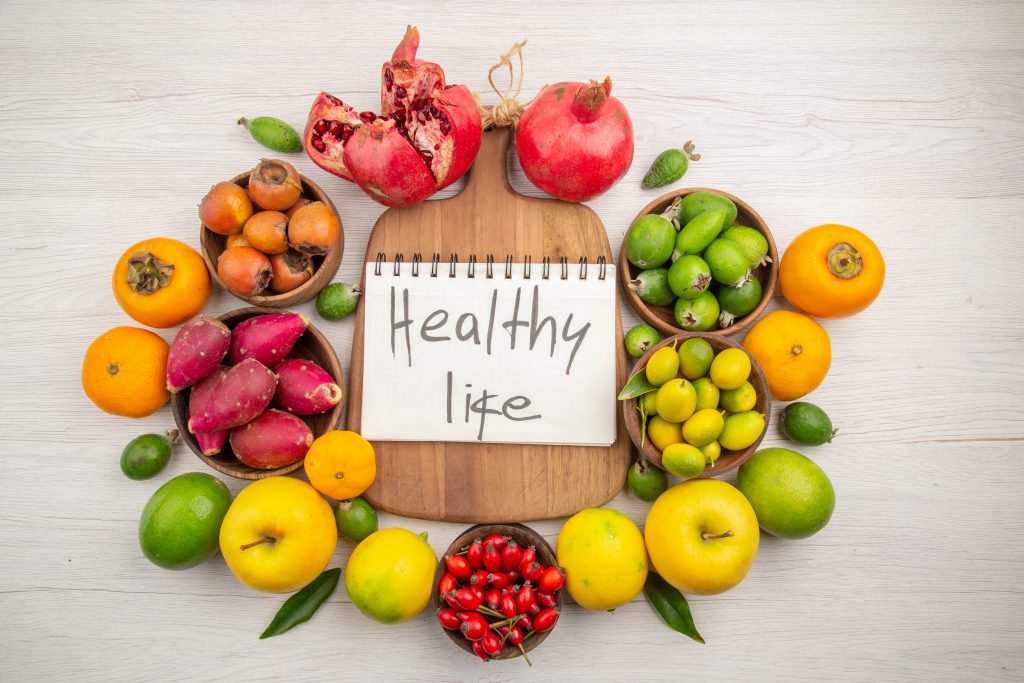High blood pressure, or hypertension, is a condition that affects millions of people around the world, and it’s a major risk factor for heart disease, strokes, and kidney damage. For those diagnosed with this condition, managing blood pressure is vital for overall health and longevity. While medication plays a crucial role, there are natural ways to help control blood pressure levels, and one of the easiest and most delicious methods is through diet.
Fruits are packed with essential vitamins, minerals, and antioxidants that not only improve overall health but also play a key role in maintaining healthy blood pressure. In this article, we will explore some of the best fruits that can help lower high blood pressure, offering you practical suggestions on how to include them in your daily meals. By the end of this guide, you’ll have a deeper understanding of how specific fruits support heart health, as well as easy tips for adding them to your diet.
Understanding High Blood Pressure and Its Risks:
Before delving into the role fruits play in managing hypertension, it’s important to understand what high blood pressure is and why it’s a significant concern. Blood pressure refers to the force of blood pushing against the walls of your arteries. When this pressure is consistently too high, it can lead to a range of serious health issues, including heart disease, stroke, and kidney failure.
Managing blood pressure is essential, and while it’s often treated with medication, lifestyle changes like eating a heart-healthy diet can also significantly improve blood pressure levels. A diet rich in fruits, vegetables, and whole grains—such as the Dietary Approaches to Stop Hypertension (DASH) diet—has been shown to be especially beneficial for those with high blood pressure.
The Role of Diet in Managing High Blood Pressure:
Diet plays an incredibly important role in blood pressure regulation. Certain foods, especially those rich in potassium, magnesium, and fiber, help relax blood vessels, reduce inflammation, and promote healthy circulation. Fruits, in particular, are excellent choices for lowering blood pressure naturally because they are often high in these essential nutrients. When combined with a balanced lifestyle that includes exercise and stress management, a fruit-rich diet can be a powerful tool in the fight against hypertension.
Top Fruits for Lowering Blood Pressure:
Now let’s take a closer look at some of the best fruits you can include in your diet to help lower high blood pressure.
- Bananas: One of the most well-known fruits for managing blood pressure, bananas are packed with potassium, a mineral that plays a crucial role in balancing sodium levels in the body. By helping your kidneys remove excess sodium, potassium can lower your blood pressure naturally. Eating one or two bananas a day can have a noticeable effect on your hypertension.
- Berries: Blueberries, strawberries, raspberries, and blackberries are rich in antioxidants called flavonoids, which have been shown to reduce systolic blood pressure (the top number in a blood pressure reading). Studies suggest that consuming berries regularly can have a positive impact on heart health, particularly for those with hypertension. Adding berries to your breakfast cereal or enjoying them as a snack is an easy way to reap their benefits.
- Oranges: Oranges are not only delicious but also packed with vitamin C, which has antioxidant properties that help reduce inflammation and support overall cardiovascular health. Rich in potassium and fiber, oranges can also help regulate blood pressure. Drinking fresh orange juice or eating whole oranges regularly can be an effective part of a blood pressure-lowering routine.
- Kiwi: This small, green fruit may not be as widely recognized for its health benefits, but it’s a powerful ally in managing blood pressure. Kiwi is a natural vasodilator, meaning it helps relax blood vessels, which can lower blood pressure. Research has shown that eating two to three kiwis daily can significantly reduce both systolic and diastolic blood pressure.
- Apples: Apples are high in fiber, antioxidants, and a special type of polyphenol that has been linked to better heart health. These nutrients work together to improve blood vessel function and reduce inflammation, helping to manage blood pressure. Eating an apple a day, especially with the skin on, can support healthy blood pressure levels.
- Pomegranates: Pomegranates have long been celebrated for their health benefits, and their ability to lower blood pressure is no exception. The fruit contains compounds that help improve blood flow and lower systolic blood pressure. Drinking pomegranate juice or eating the seeds regularly can provide significant cardiovascular benefits.
- Avocados: While technically a fruit, avocados are unique because they are rich in heart-healthy monounsaturated fats, as well as potassium. These nutrients help to lower blood pressure by reducing the pressure on blood vessels and improving circulation. Adding avocado to salads or making guacamole is a simple and tasty way to incorporate it into your diet.
- Watermelon: This refreshing fruit contains an amino acid called citrulline, which has been shown to help relax blood vessels and improve blood flow. Watermelon is also hydrating, making it a great fruit for overall heart health. Whether enjoyed on its own or added to fruit salads, watermelon is a great addition to any blood pressure-lowering diet.
- Citrus Fruits: Lemons, limes, and grapefruits are not only tangy and refreshing but also packed with vitamin C, antioxidants, and fiber. These fruits help reduce blood pressure by supporting blood vessel health and reducing inflammation. Incorporating citrus fruits into your meals or drinks is a simple way to improve heart health.
- Mangoes: Mangoes are rich in fiber and potassium, two nutrients that play a role in controlling blood pressure. This tropical fruit also contains antioxidants that help prevent damage to blood vessels. Whether eaten fresh, blended into smoothies, or added to salsas, mangoes can be a tasty and healthy addition to your diet.
How to Incorporate These Fruits into Your Diet:
The best way to reap the benefits of these fruits is by adding them to your daily meals. You don’t have to make drastic changes to your diet—small adjustments can make a big difference. For instance, you can start your day with a smoothie made from a combination of berries, bananas, and spinach. Snack on apple slices with almond butter, or add avocado to your salad at lunch. For dinner, consider preparing a watermelon or citrus fruit salad. The possibilities are endless!
Other Lifestyle Tips for Blood Pressure Management:
While fruits are an important part of managing blood pressure, they should be part of a broader lifestyle approach that includes regular exercise, stress management, and sufficient sleep. Reducing sodium intake, limiting alcohol consumption, and avoiding smoking are also key steps in maintaining healthy blood pressure levels. Regular blood pressure checks will help you monitor your progress and adjust your lifestyle as needed.
Conclusion:
Incorporating fruits into your daily diet is one of the easiest and most natural ways to manage high blood pressure. By choosing the right fruits, such as bananas, berries, oranges, and kiwis, you can help regulate your blood pressure and improve your heart health. Remember that small, consistent changes in your diet, combined with other healthy lifestyle habits, can have a significant impact on your overall well-being. Start by adding a few of these fruits to your meals today and take the first step toward a healthier heart.



